PsoriasisIs a chronic disease that affects the skin, sometimes the nails, joints and internal organs. It is manifested by itching and the appearance of pink-red rashes - papules that can merge into larger plaques. These papules rise above the surface of the skin. They are covered with silvery scales, which peel off easily when peeled.
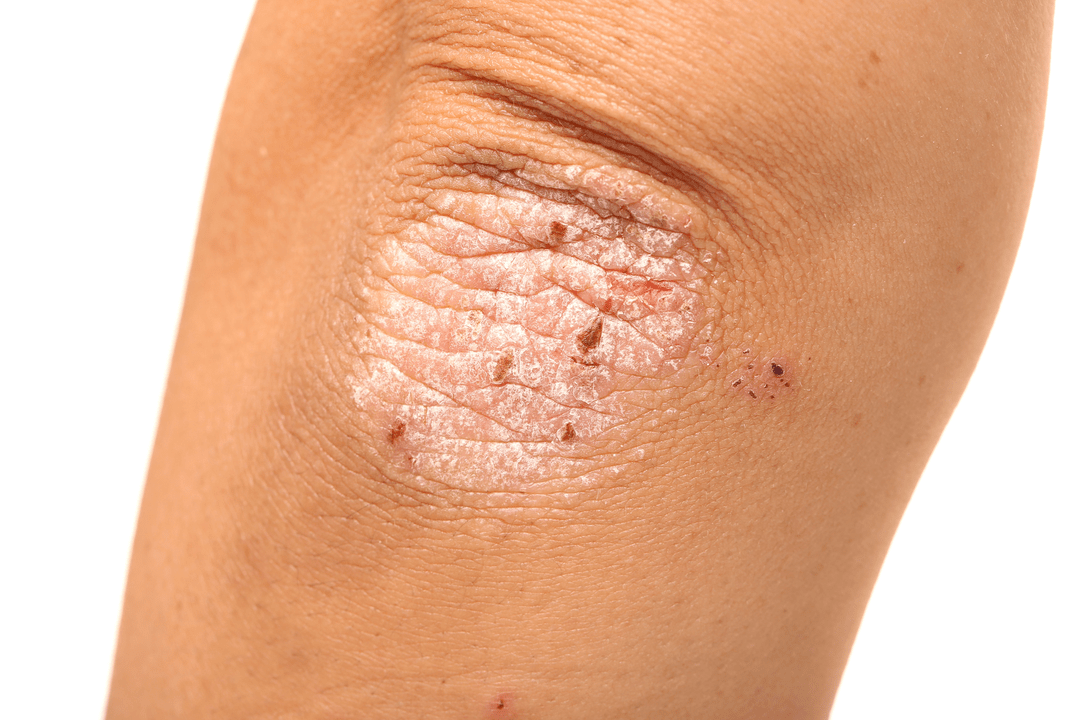
Quite often the disease is combined with impotence, accelerated ejaculation and Reiter's syndrome. Extensive psoriasis can cause psoriatic arthritis.
Risk factors
Causes of psoriasishave not yet been fully identified. Risk factors for the development of the disease include:
- microbial factor - different types of fungi, mycoplasma;
- neuropsychiatric trauma, stress;
- endocrine diseases - diabetes mellitus, thyroid disease;
- foci of chronic infection, especially streptococcal;
- immunodeficiency states;
- disorders of lipid and protein metabolism;
- injuries to the skin and joints.
Is psoriasis transmitted?
Psoriasis is not contagious. Many researchers pay attention to the familial nature of psoriasis and recognize its genetic nature. Moreover, it is not the disease itself that is hereditary, but a predisposition to it.
If you find such symptoms, consult your doctor. Do not self-medicate - it is dangerous for your health!
Symptoms of psoriasis
The first symptoms of psoriasis:skin rash in the form of bright pink plaques with a scaly surface. The plaques are solitary, rising above the level of healthy skin, located on the elbows and in the kneecaps.
More often, psoriatic plaques appear on the skin of the knees, elbows, chest, abdomen, back and scalp, but as the disease progresses, they can appear in any other, most unexpected places on the skin.
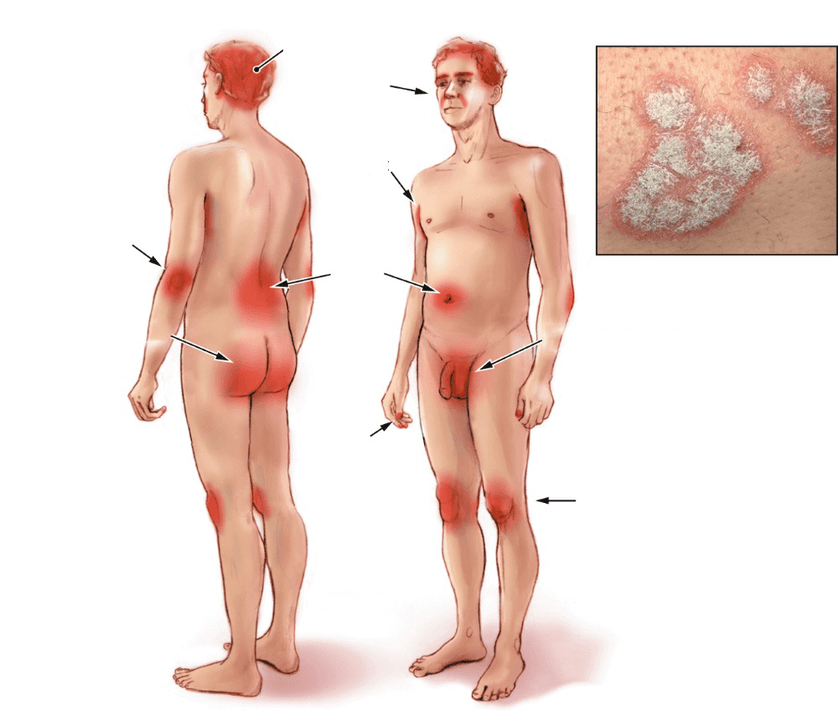
Initially, the papules are small - 3-5 mm, the color is bright pink. Gradually increasing in size, they become covered with silvery scales and merge into larger formations called plaques.
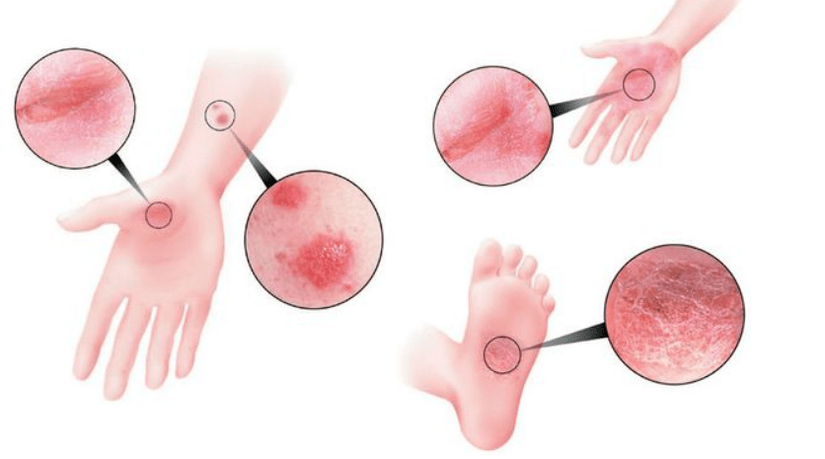
The fresh elements of the papules, as a rule, are bright in color, to red, the "old" are more faded. In the initial stage of psoriasis, the edges of the papules do not peel off. They represent a hyperemic border -growth corolla. . .
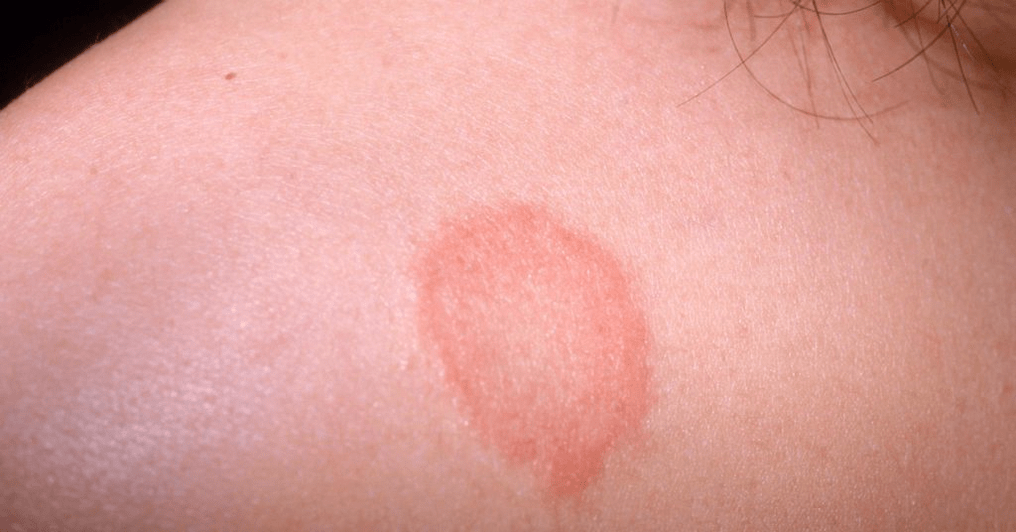
The hallmark of psoriasis is the Auspitz triad. This triad can be observed by scraping the surface of the papule with a sharp object. It includes three phenomena:
- phenomenon of stearin stain- layering of a large number of silvery-white scales, which are easily separated when scraped;
- symptom of psoriatic film- exuded surface made of a prickly layer which opens after peeling off the lower layers of the stratum corneum;
- phenomenon of blood dew- exposure to superficial capillaries in the form of small blood stains after detachment of the psoriatic film.
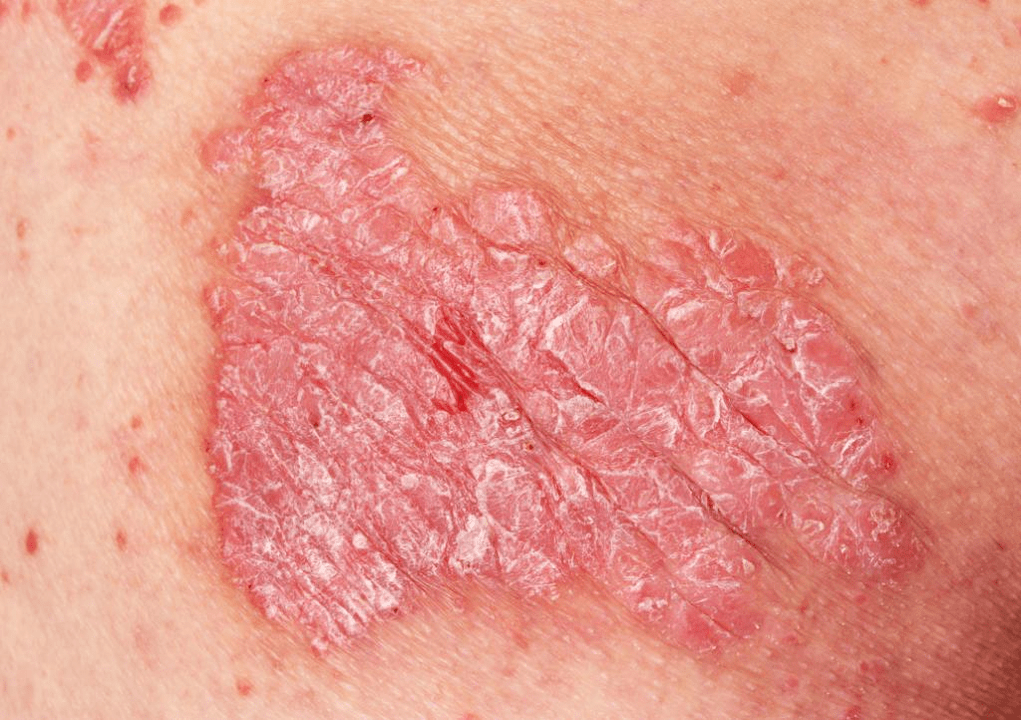
Signs of different types of psoriasis
Clinical types of psoriasis:
- Spotted psoriasis- represented by pale pink slightly infiltrated spots. Looks like toxidermia.
- Irritated psoriasis- occurs due to exposure of the skin to aggressive environmental factors (sunlight, cold, heat) and irritating drugs. The color of the plaque becomes more intense, increases in size, rises more above the surface of the skin, a belt appears at the edges in the form of redness.
- Seborrheic psoriasis- often develops in patients with seborrhea. The clinical picture is very similar to seborrheic eczema.
- Exudative psoriasis- occurs quite often. Occurs due to excessive secretion of inflammatory fluid - exudate. Impregnates the accumulations of scales, turning them into scales-crusts.
- Psoriasis of the palms and soles- is represented either by common plaques and papules, or by hyperkeratotic formations similar to corns and calluses.
- Follicular psoriasis- a rare form of the disease. The rash consists of white miliary nodules with a funnel-shaped depression in the center.
- Psoriasis of the mucous membranes- a rare form of the disease. It occurs on the mucous membrane of the mouth and bladder. It appears in the form of gray-white areas with a red frame.
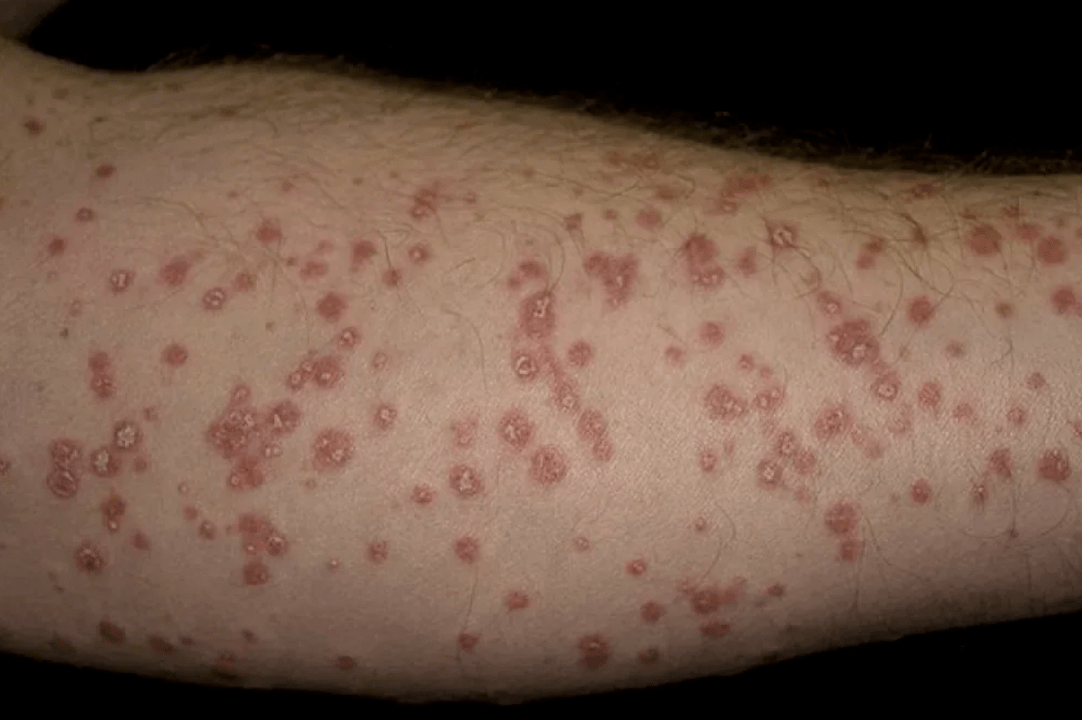
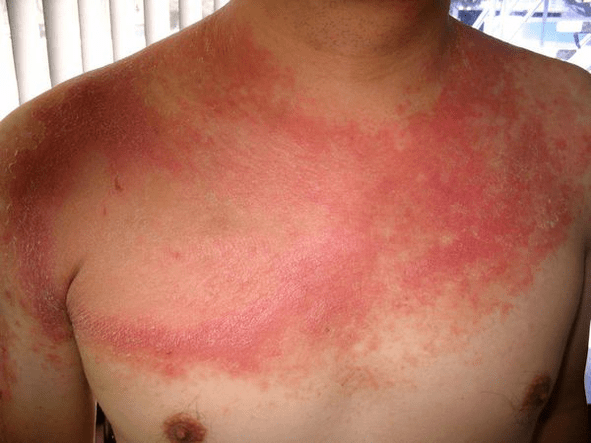
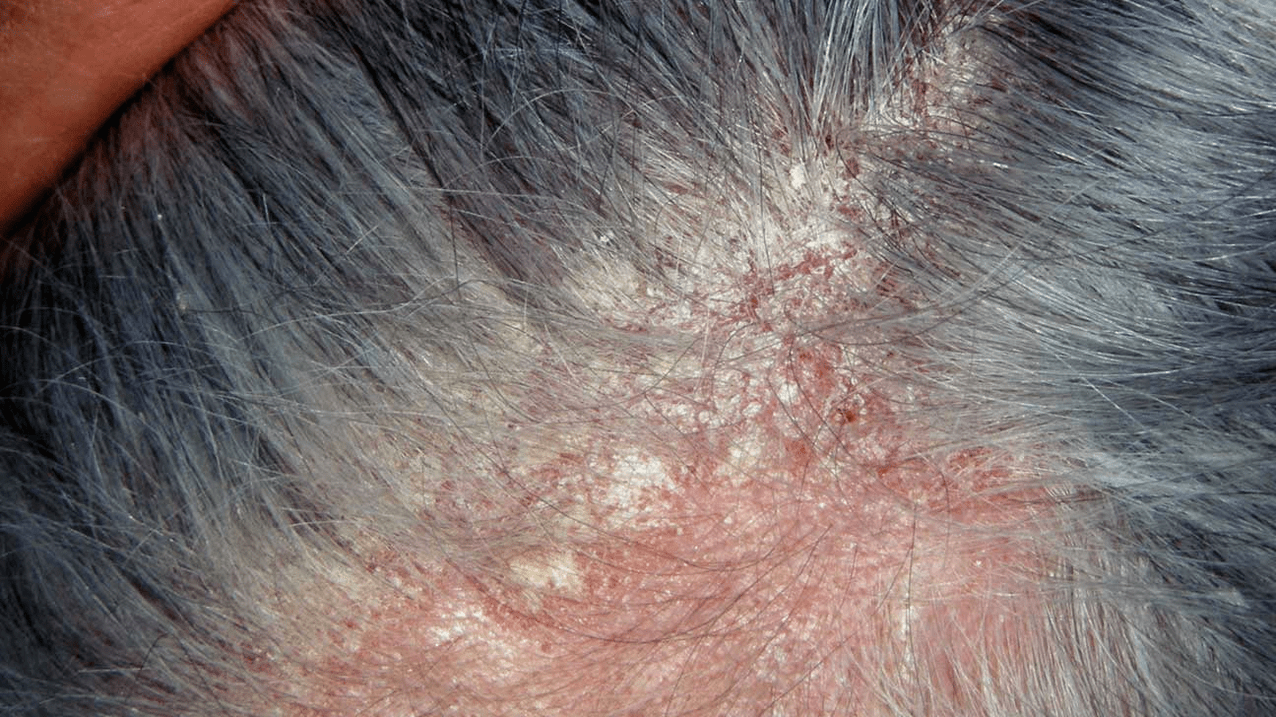
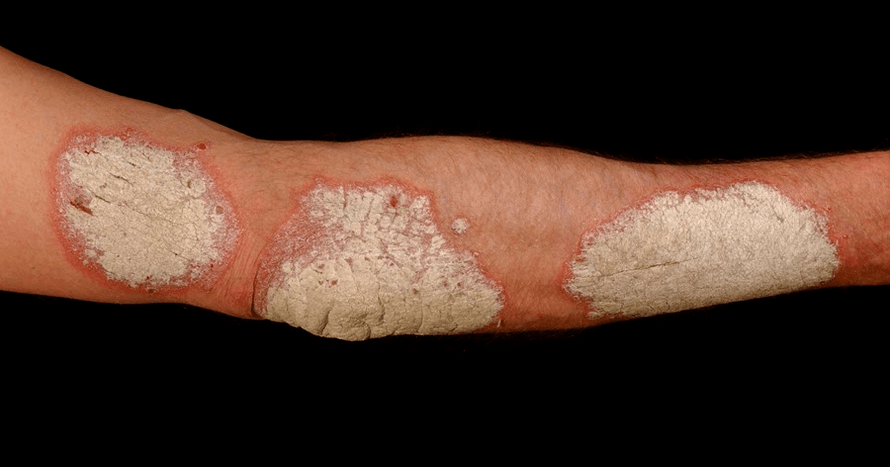
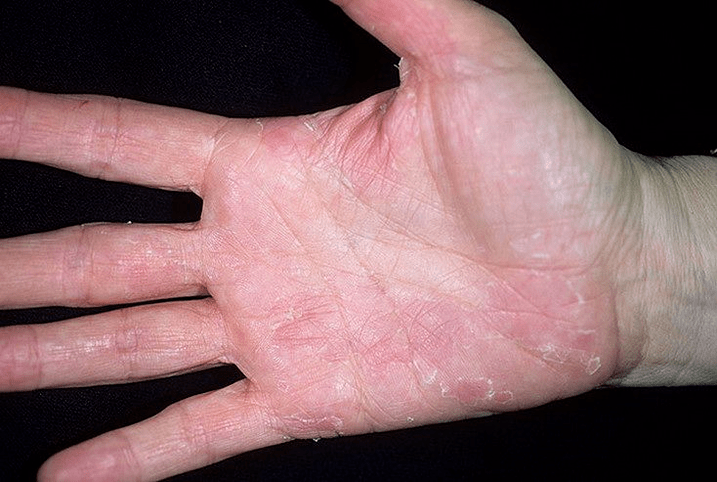
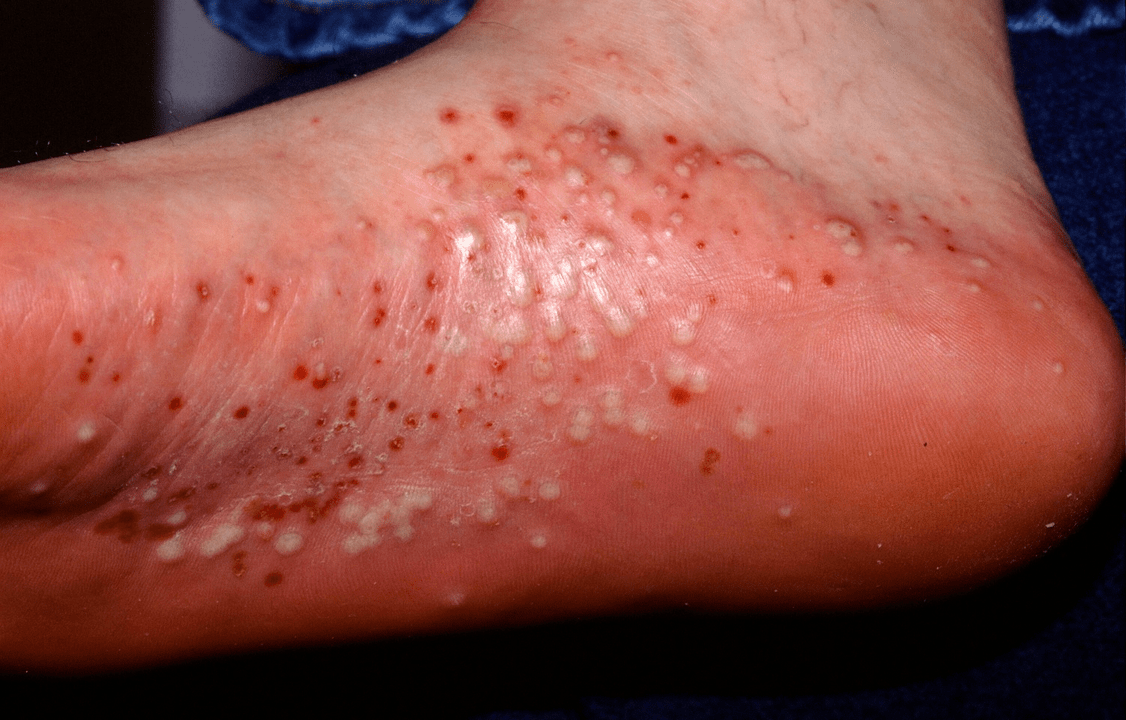
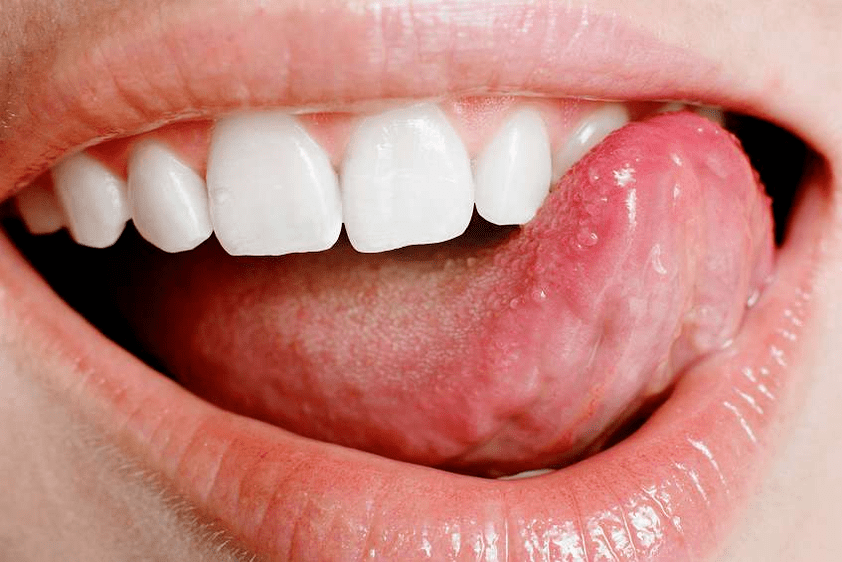
Frequency of psoriatic manifestations
Cyclic exacerbations are characteristic of psoriasis. They most often appear in autumn and spring.
Pathogenesis of psoriasis
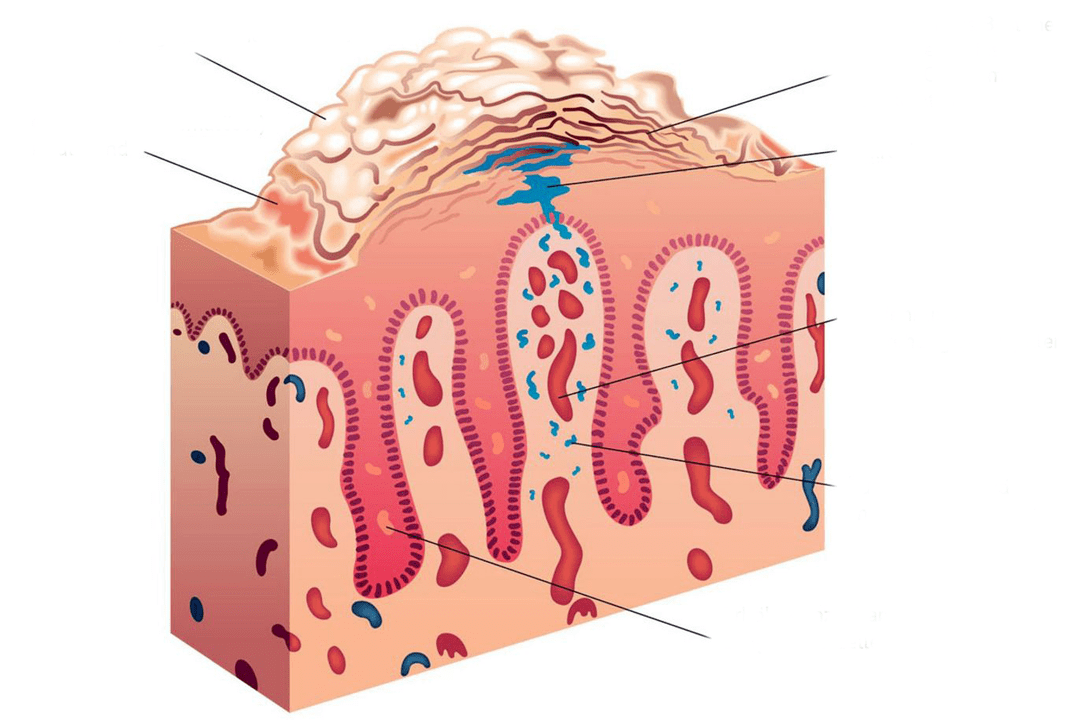
Dermatosis is an inflammatory process associated with the work of immune T cells. As a result of this inflammation, the proliferation of keratinocytes, the main cells of the epidermis, is accelerated.
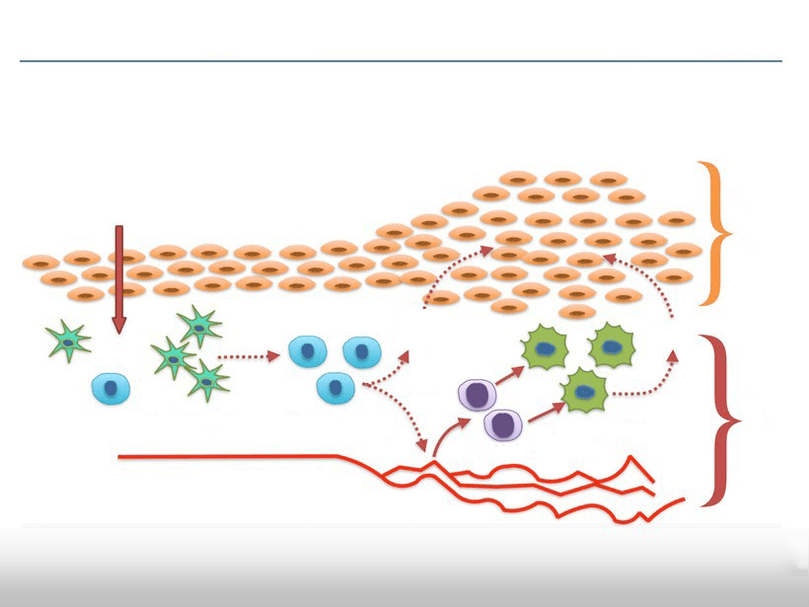
Psoriasis, a type of dermatosis, is a chronic inflammatory disease. It involves microbial pathogens that can bind to the surface of the skin.
Everything that happens in the skin under the influence of the pathogen is a classic inflammatory reaction on the principle of RTCDF:
- Rubor - redness;
- Tumor - tuberculosis, edema;
- Calor - fever, fever;
- Dolor - pain;
- Function laesa - dysfunction.
Redness and thickening of the skin at the site of the lesion, itching, increased keratinization, followed by the formation of scales - all these are manifestations of the inflammatory process, a protective reaction of the body aimed at combating the microbial pathogen. Without timely outside help, the body is often defeated.
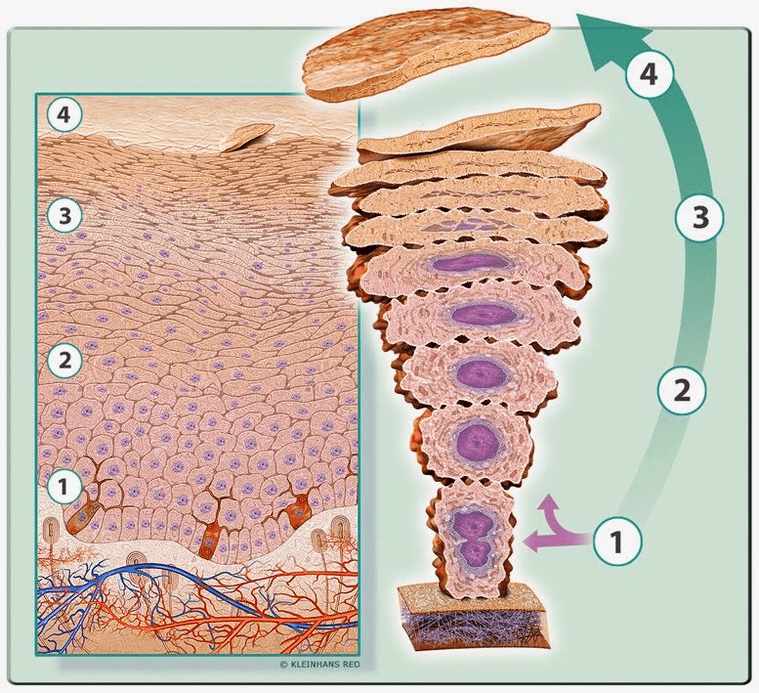
Some scientists adhere to the theory of genetic predisposition to disrupt the process of cell division. In such a disorder, increased cell death and keratinization occurs, followed by their growth and the appearance of a large number of incompletely keratinized epithelial cells. But this theory does not in the least contradict the above microbial.
Classification and stages of development of psoriasis
There is no generally accepted classification of psoriasis.
TraditionallyThere are four types of disease:
- vulgar psoriasis - seborrheic, follicular, warty, exudative, bullous, psoriasis of the palms and soles, psoriasis of the mucous membranes;
- pustular psoriasis;
- psoriatic erythroderma;
- psoriatic arthritis.
According to ICD-10 there are:
- L40. 0 Psoriasis vulgaris (psoriasis with coins and plaques);
- L40. 1 Generalized pustular psoriasis (impetigo herpetiformis, Tsumbusch's disease);
- L40. 2 Persistent acrodermatitis;
- L40. 3 Palmar and plantar pustulosis;
- L40. 4 Tear of psoriasis;
- L40. 5 Arthropathic psoriasis;
- L40. 8 Another psoriasis;
- L40. 9 Psoriasis, unspecified
Complications of psoriasis
Without timely and competent treatment, psoriasis begins to negatively affect vital organs and systems: joints, heart, kidneys and nervous system. These conditions can lead to injury and even death.
What is psoriatic arthritis
Psoriatic arthritis is the most severe form of psoriasis, as it often causes damage.
Doctors are most often faced with this complication. Occurs as a result of inflammatory changes in the joints.
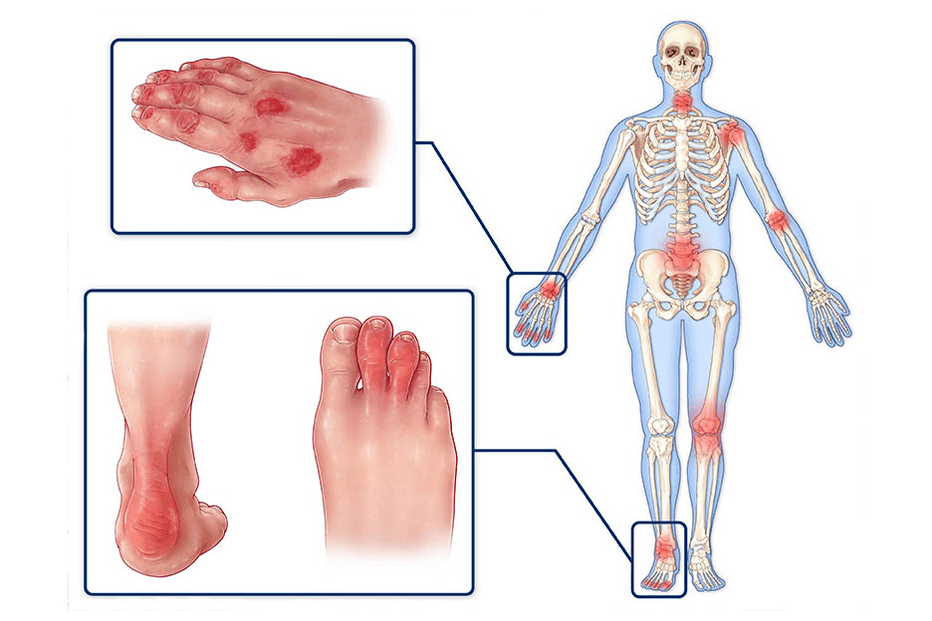
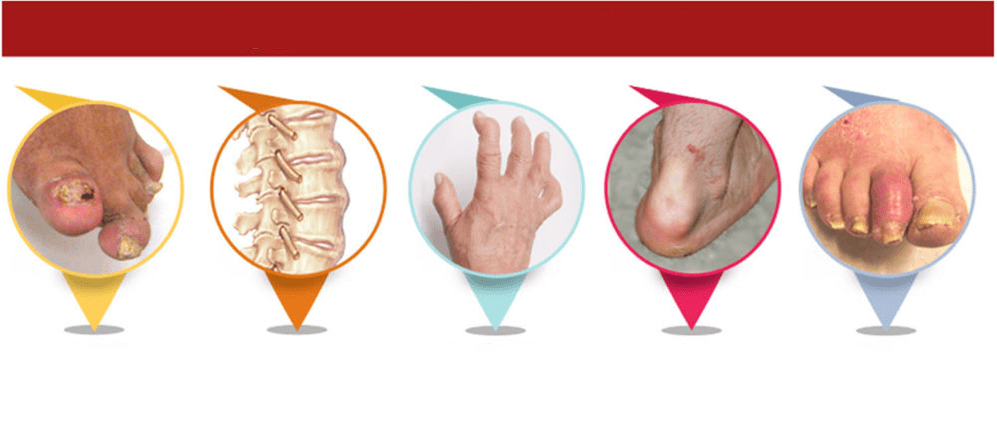
The joints of the hands, wrists, feet and knees are most affected. Over time, the disease can spread to the hips, shoulders and spine. With further development, the muscles begin to ache near the affected joints. Patients complain of stiffness, especially in the morning. Their body temperature often rises throughout the day.
The clinical picture of psoriatic arthritis develops in the manner of ordinary arthritis: first there is pain, then swelling, stiffness and limited mobility. A characteristic symptom of this complication is a finger of sausage. It occurs due to the defeat of all interphalangeal surfaces.
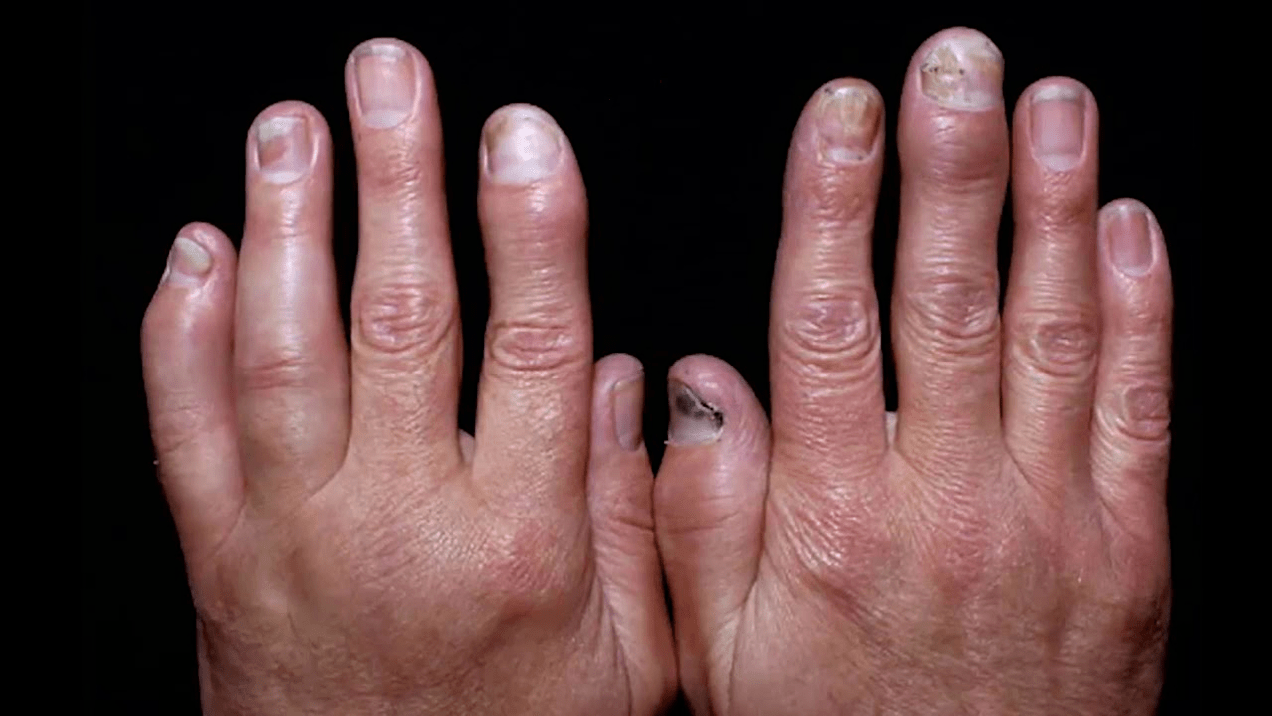
Other complications of psoriasis
Slightly less commonpsoriatic erythroderma. . .This condition occurs when the skin is completely affected. Patients worry about itching and burning, profuse flaking of dead tissue, a strong reaction of the skin to changes in temperature.
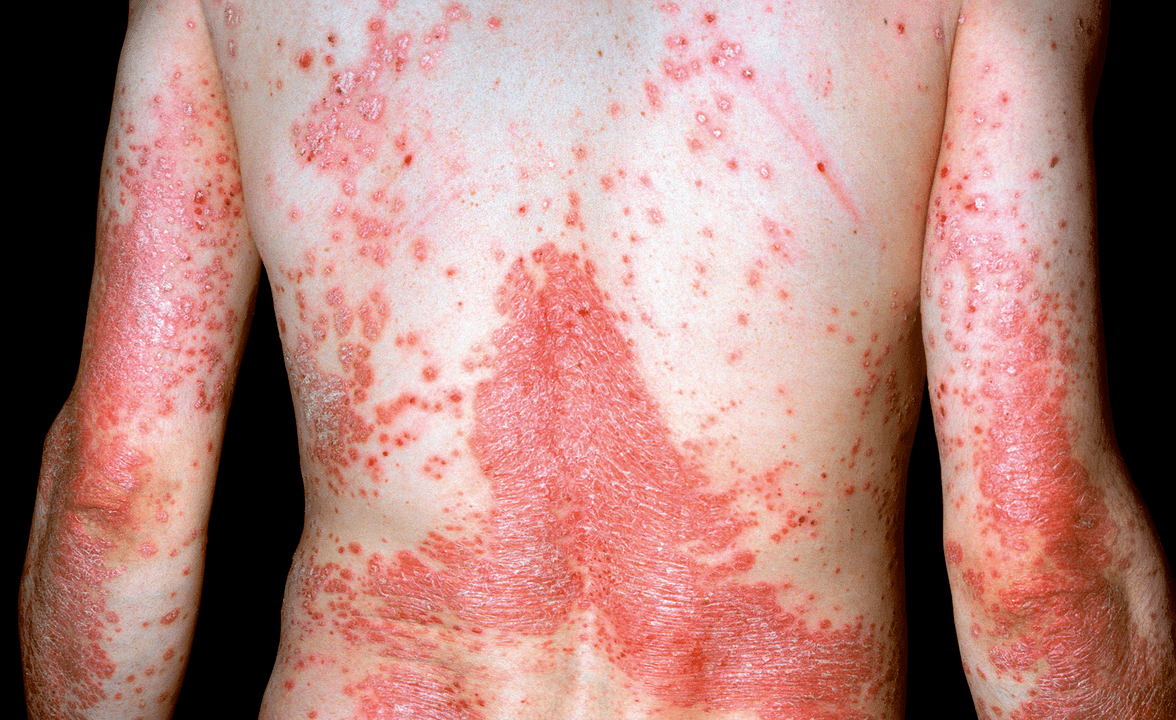
The next most common phenomenon ispustular psoriasis. . .This complication is associated with the addition of a secondary infection - staphylococci and streptococci. Clinically, pustular psoriasis is accompanied by the appearance of pustules - pustules the size of a buckwheat grain. Pustules appear in different places. They rise above the surface of the skin, are characterized by rapid growth and a tendency to merge. Existing symptoms are accompanied by fever and signs of serious poisoning.
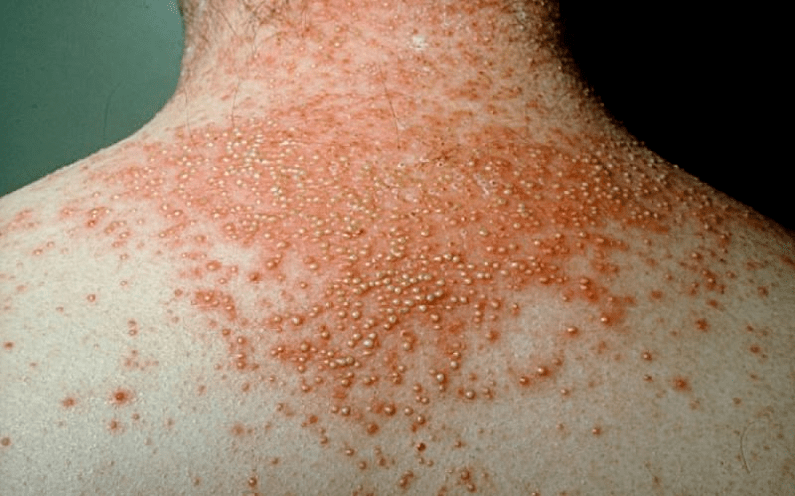
Damage to internal organswith psoriasis are now extremely rare. As a rule, people who lead an antisocial lifestyle are susceptible to them. The genitourinary system is more often affected: the kidneys, the lining of the bladder and the urethra. This leads to the development of pyelonephritis, glomerulonephritis, cystitis and urethritis.
On the part of the heart, psoriasis can cause damage to the mitral valves, inflammation of the heart muscle and the outer lining of the heart - myocarditis and pericarditis. When the nervous system is damaged, patients complain of a crawling sensation, increased irritability or depression, constant fatigue, drowsiness and apathy.
Diagnosis of psoriasis
When to see a doctor
It is necessary to consult a doctor at the first symptoms of psoriasis: the appearance on the skin of bright pink plaques with a scaly surface.
Preparing for a doctor's visit
Three days before visiting a doctor, you should stop applying medicated ointments on the skin. No other special training is required.
Psoriasis is such a recognizable disease that it will not be difficult to diagnose based on external signs. Patients can often be diagnosed, as they say, "out of the box. " If necessary, the doctor scrapes the surface of the skin to detect the Auspitz triad.
OV Terletsky, PhD, together with co-authors, proposed a diagnostic scheme developed on the basis of data from the American Rheumatological Association. It includes the following examinations:
- complete blood count (with platelets);
- general urine analysis;
- blood chemistry;
- acute phase reactions of the body - C -reactive protein and rheumatoid factor;
- immunoglobulins - IgA, IgG, IgM, IgE)
- complement binding reaction with gonococcal and chlamydial antigen;
- the reactions of Wright and Hedelson;
- coagulogram - assessment of blood coagulation;
- blood test for borreliosis and toxoplasmosis (according to the indications);
- blood test for HLA.
However, there are many diseases under the guise of psoriasis. In this regard, it becomes necessary to conductdifferential diagnosis, in particular between papular syphilis, Reiter's syndrome, neurodermatitis, rosacea lichen, systemic lupus erythematosus and seborrheic eczema. To do this, use:
- biopsy - tearing off a piece of skin with subsequent histological examination;
- laboratory diagnosis - often used to distinguish psoriasis from papular syphilis;
- blood tests for other hidden infections for a better choice of antibiotics.
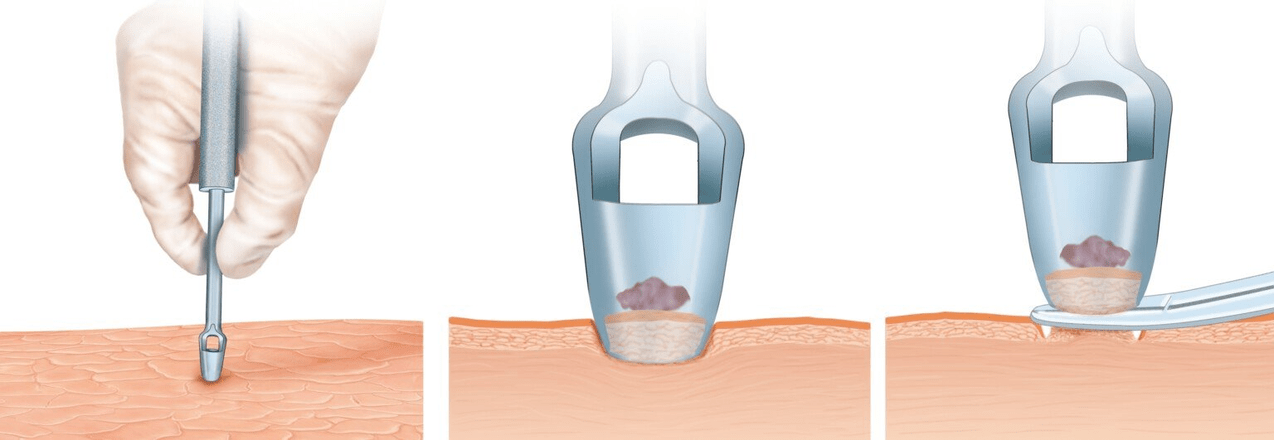
Instrumental diagnostic methodsIt is used mainly in complicated forms of psoriasis associated with damage to joints and internal organs. These include: X-rays of the joints, ultrasound of the heart, kidneys and bladder.
Treatment of psoriasis
Is There An Effective Treatment For Psoriasis
Despite the fact that psoriasis is a recurrent disease, it can be completely eliminated provided that you consult a dermatologist in time, who can identify the true causes of psoriasis. In the last decade, many drugs with systemic and local action have appeared, aimed at eliminating the cause and suppressing the mechanism of disease development. Drugs that interact with each other using chemical signals (cytokines) have proven to be very good. They eliminate the increased proliferation of skin creatinocytes.
Phototherapy
In 1994, the team of the Department of Dermatovenereology of MAPO SPb introduced a method of treating psoriasis usingUFO blood- photomodification of the blood with ultraviolet light.
The ability of sunlight to have a beneficial effect on the skin in many diseases, including psoriasis, has been known since time immemorial. In the early twentieth century, a group of German scientists suggested that because ultraviolet light has a healing effect on exposed skin, this effect is likely to occur when ultraviolet radiation is applied to the blood. After all, this is also a kind of fabric. This assumption was confirmed by the first session of exposure to ultraviolet rays on the blood, which took place in Germany in 1924.
The therapeutic effect of ultraviolet rays on the blood is associated with profound structural changes at the molecular atomic level, which are captured by immunocompetent organs - liver, spleen, bone marrow and lymphoid tissue. These changes are considered by the organs as an alarm signal and therefore they produce dozens of times more immune complexes. In this case, ultraviolet light is a kind of "whip" that forces the body to dramatically increase its defenses to fight the disease.
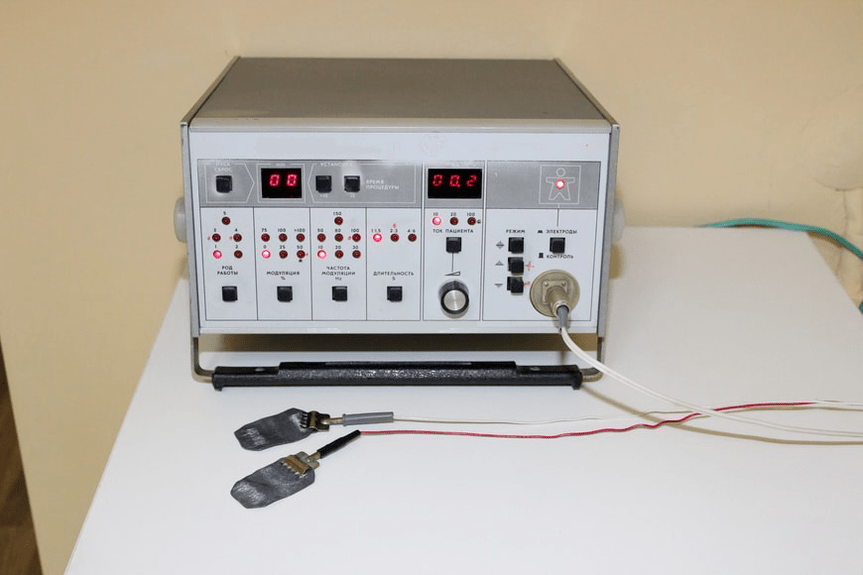
It is worth noting the PT effect -lining with ultraviolet therapy. . . This method of treatment is important given the chronic nature of psoriasis, associated with many complications of internal organs caused by various microbial pathogens. The longer the microbes are in the body, the wider their habitat becomes. These microscopic creatures capture more and more anatomical areas through blood and lymph flow. Once in the tissues, they seek to penetrate as deeply as possible into the intercellular spaces. There they form microcolonies, protected from the remains of dead, destroyed cells and leukocyte shaft. Therefore, microorganisms may be out of the reach of antibiotics for years. They easily compensate for the lack of nutrients by entering a state of suspended animation - something between life and death.
The ability of ultraviolet rays helps to destroy microbial "shelters". They create favorable conditions for the penetration of antibiotics and other drugs that affect the cause of psoriasis.
Skin application of ultraviolet radiation is also important. The best known method of treatment using this principle isPUVA therapy. . . Although it is less effective than ultraviolet irradiation of the blood. The therapeutic effect does not last long, relapse may occur two weeks after the end of treatment.
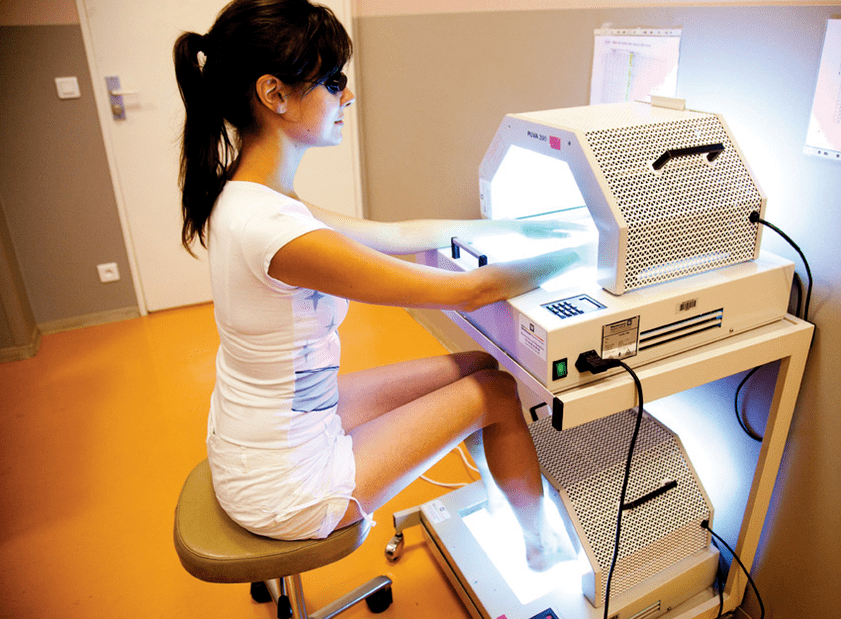
Medication treatment
Of the drugs, the following works well:
- vitamin A derivatives, which reduce the rate of maturation of keratinocytes and normalize cell differentiation;
- immunosuppressants that reduce the activity of T-lymphocytes, which contribute to increased division of epidermal cells;
- drugs to treat malignant tumors that inhibit the reproduction and growth of atypical skin cells.
What ointments and creams are effective in treating psoriasis
Ointments and creams with anti-inflammatory components will help alleviate the patient's condition.
How to treat psoriasis of the scalp
Ointments are not effective in treating scalp psoriasis. In addition to medication and ultraviolet treatment, a special shampoo can be used.
How to treat psoriasis on the elbows and hands
Psoriasis of the elbows and hands is treated by the same methods as the rest of the body. The peculiarity of the course of psoriasis in this area is that the skin of the hands is exposed to physical, mechanical and chemical influences, which is considered an aggravating factor in the course of the disease.
Is treatment with monoclonal antibodies effective for psoriasis?
Monoclonal antibody therapy for psoriasis is very effective. Monoclonal antibody drugs are laboratory-produced antibodies similar to those produced by human immune cells. Monoclonal antibodies are selectively targeted to targets responsible for the development of the disease.
How to recognize and treat psoriasis in children
In children, psoriasis is often more violent and is disguised as other diseases (eczema, erysipelas, herpes), which complicates the diagnosis. The methods of therapy are similar to those for adults: phototherapy, medication and topical treatment.
What baths to take for psoriasis
Baths with aloe can help reduce inflammation and itching.
How to treat psoriasis according to Pegano
The Pegano method for treating psoriasis includes bowel cleansing, diet and herbal teas. The effectiveness of this method has not been proven by clinical trials.
The role of nutrition in treatment
Nutrition significantly affects the course of psoriasis. In the treatment it is necessary to exclude alcohol, salty, spicy, sour, nuts, citrus fruits, honey, chocolate and smoked meats.
Which sanatoriums show rest for the treatment of psoriasis
For psoriasis balneotherapy is preferable to be carried out at sea in a region with warm, dry climate and very sunny days. The most suitable for this are the resorts of Crimea.
Folk ways
Some folk remedies can help reduce itching and flaking of the skin in patients with mild to moderate psoriasis. These methods include:
- cream with aloe extract;
- fish oil applied to the skin with a coated bandage for six hours a day for four weeks;
- cream with Oregon grape extract.
Forecast. Prevention
Psoriasis is not a sentence. If the patient in time has sought qualified help from a specialist who can determine the true causes of the disease and prescribe effective treatment, then the disease will be defeated.
The simple form of psoriasis manifests itself only with a skin defect. Therefore, the patient does not need special working conditions. The exception is working in a chemical plant: in this case, the stay at the workplace will have to be excluded.
It is worth remembering that psoriasis can cause complications. Psoriatic arthritis most often develops. Its severe forms can limit the performance of official duties and in the future lead to complete disability.
Prevention of psoriasis is an integral part of therapeutic measures to eliminate one of the most serious skin diseases. After recovery, the patient should completely reconsider their lifestyle, eliminate bad habits, pay attention to the treatment of chronic diseases of other organs, adjust diet, include outdoor walks and sports in everyday life.
Do they take with psoriasis in the army?
Severe forms of psoriasis are sufficient grounds for declaring a serviceman unfit for military service, mild forms - for limited fitness.























